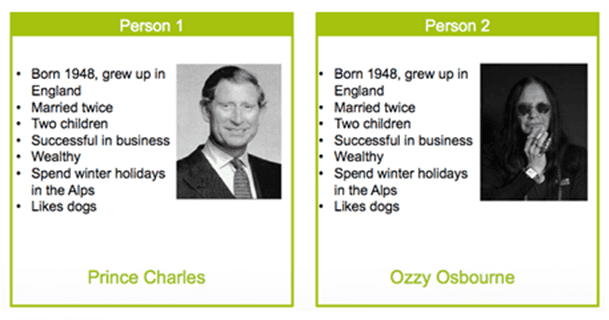Hyper-Personalization vs. Personalization: Hyper-Personalizing the Customer Experience

Hi <name>,
<First name>, you’ve received 10% off!
Where have you been <%first%name%>?
Feel special yet?
I didn’t think so. When we bungle personalization, the seams of our products and services start to show. An email with a misplaced token isn’t likely going to get me to unsubscribe, but in another medium—a banner ad, a chatbot, an in-product message— or repeated over time, it can start to hurt your product offering because it’s making your audience feel less special.
And that’s what your audiences want: To feel special, distinct, personally catered to, seen and heard, and recognized.
Personalization has been a great step in customer experience. To create a diverse, inclusive, innately distinct feeling in your product, however, you need to level up. These days, it’s no longer a question of personalized or not. It’s now a matter of personalization vs hyper-personalization.
In a world where seemingly everyone is doing personalization, hyper-personalized, diversified customer experiences reign supreme.
What is hyper-personalization?
Hyper-personalization is the use of real-time data (and lots of it), AI, machine learning, and predictive analytics to get better information from your audience at an individual level and, in turn, act appropriately on that information.
When you hyper-personalize, you create exceptional customer experiences that constantly take into consideration and adapt to the people using your apps, their job roles, their needs, their backgrounds, and their preferences.
An example of hyper-personalization is a fitness tracker. The more data you have, the more personalized (hyper) you can make it.
Getting empirical data from gyroscopes or pressure sensors can give you info on how individual users prefer the orientation of their UI. It could also give you an idea of what a good distance is for someone who just started marathon training versus someone who is an experienced marathon runner. Getting that data lets you then serve it up to others in similar positions. Or maybe someone is trying to lose/gain weight. Depending on body types, injury history, and other life contexts, the information your fitness tracker is going to offer will change. The more you understand your users, the better you’ll serve your users.
The more you understand your users, the better you’ll serve your users.
Geolocation is another example of hyper-personalization. Depending on where your customers are, your tracker could respond in different ways. Perhaps you have a runner from North Carolina visiting Denver for the holidays. Your app could detect their location and serve up content about running in higher altitudes.
On top of empirical data, you also have feedback loops that give you anecdotal evidence as to how your users are using your app. Combining this and the empirical data lets you iterate on your product more, and thus create more feedback cycles.
The more data you have, the better you can train AI and machine learning services. Doing so lets you get into predicting user behavior. With predictive analytics, your product isn’t just reactive, it’s proactive, delivering those special touches your customers didn’t even know they needed. Depending on how you train the model, you can optimize experiences for the data you feed into the algorithm.
Why hyper-personalization over personalization?
A good building block for starting out a new application, software product, or service is to begin with personas. Personas, when well-researched, give us an idea of the pain points that your potential users may have. This leads to you offering up solutions to the problems people experience.
However, personas and demographics can only take your product so far.
Take this recent meme making the rounds on LinkedIn.

Sure, their shared baseline demographics could lump them into the same persona category. But where one loves to know the latest discounts on Saville Row suits, the other may be more interested in where to buy pyrotechnic displays in bulk (I’ll let you decide who each is). You’d approach them in very different ways. Personalization lets you address them individually, but beyond that, can you imagine Prince Charles receiving the same content or messaging that Ozzy Osbourne gets?
You’re not just developing for the composite anymore.
Let’s dive deeper. Maybe you’re creating a new fitness tracking product. You start out with the persona Muscle Mark, a cross-fit coach with an impeccably healthy diet and exercise regimen. This works well for your initial launch, but Mark is a man and there are also female cross-fit trainers that are now using your product. There are also non-binary people out there to consider, all with different pronouns, too. On top of gender differences, all have different economic, social, and educational backgrounds and have varying biological needs.
Hyper-personalization lets you level up your customer experience and deliver distinct, individualized experiences at scale.
Fitness tracker users might share the same goal of wanting to be able to understand more about their health and movement, but how they go about it and why can vary drastically. Hyper-personalization can help increase the value of your product because it can appeal to many different types of people who want the same product.
All of this is to say that as your product grows, you need to move away from the generalized persona you started with. Prince Charles and the King of Dark Rock may fall into the same demographic-based persona bucket, but their ideas of what good health is and why they might want a tracker to stay on top of it are very different.
Your users’ needs vary greatly from person to person, which is why personalization isn’t cutting it anymore.
Hyper-personalization lets you level up your customer experience and deliver distinct, individualized experiences at scale.
The best way to develop hyper-personalized experiences
So how do you efficiently build a product that simultaneously meets the distinct needs of every user and is scalable across all users?
One way is with microservices and reusable components. Using these methods means you’re not building every service from scratch.
For instance, that fitness tracking app may use the same calorie counter you’ve developed. The core function of the calorie counter is going to be the same across all users. So you can use the foundation of it everywhere, but when you have to develop for a new type of user, you can re-skin, relay different APIs to it, or serve up different advertisements depending on the users’ needs.
Hyper-personalization applies to the B2B world, too.
My fitness tracking app example is very consumer-centric, but this thought process applies to the B2B world, too. Just because you’re building for your employees or for another business doesn’t mean you develop for the composite. Quite the opposite. Consider a loan approval application. You need to develop functions for the loan officer, the underwriter, and the borrower. You need to consider the different loans one could be requesting—small business, new home, automobile. Then you have to consider the different contexts these users could be in. An assessor may require offline mobile. An inspector may require geolocation.
Building a loan approval application with microservices and reusable components allows you to build a core system that you can adapt, modify, and extend based on new user types.
Here’s another B2B hyper-personalization example: An application that allows employees at a manufacturing company different access to different areas of the factory floor. Different employees have different levels of access to various areas, meaning their keycard or fob reacts differently to the IoT sensors you have around your buildings. Different employees will get different notifications depending on their levels of access, too.
HR systems, machine maintenance, IT services. All of these B2B use cases have very real people with very real diverse needs and job roles that need to be taken into account when developing them.
Equal opportunity experiences
Hyper-personalization is an opportunity for distinction. A decade ago, designing and developing the customer experience meant releasing the product, doing user testing, and waiting on results. The iteration that happened after that research was performed was all still leaning toward one demographic. Personalization is a nice way to cover up the fact that the developer thinks they know what is best for the customer. In reality, only the customer knows what’s best for them.
With hyper-personalization, we can use the data we get in real-time and to respond in real-time. We can turn personas into actual persons.
